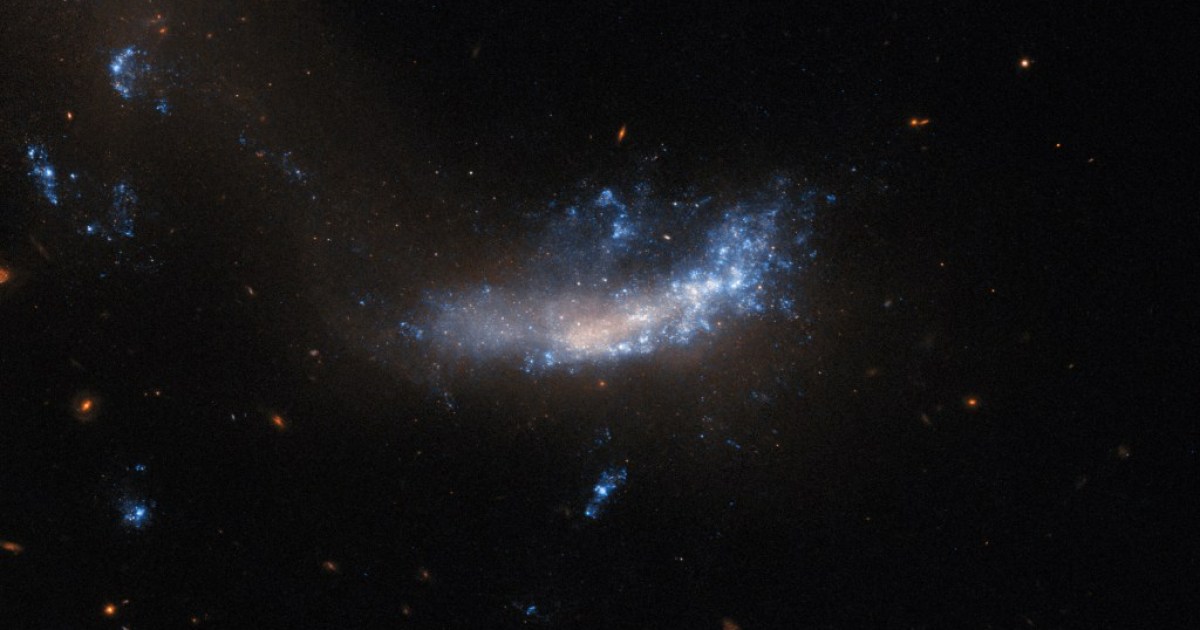This week’s image from the Hubble Space Telescope shows the aftermath of an epic explosion in space caused by the death of a massive star.
Some of the most dramatic events in the cosmos are supernovas, when a massive star runs out of fuel to fuse — first running out of hydrogen, then helium, then burning through heavier elements — and eventually can no longer sustain the outward pressure from heat caused by this fusion. When that happens, the star collapses suddenly into a dense core, and its outer layers are thrown off in a tremendous explosion called a Type II supernova.
Even though a supernova is only at its brightest for a few weeks, its effects can be seen thousands of years later. That’s because the outer layers of material from the star are thrown off, traveling at great speeds and creating a structure called a supernova remnant. These remnants can be strikingly beautiful and include structures such as the Vela supernova remnant, Cassiopeia A, and the Cygnus Loop.
This Hubble image shows the location of a Type II supernova called SN 2010jl, first observed in 2010. It is located in the small galaxy UGC 5189A, located 150 million light-years away. “This particular supernova is notable because it was an exceptionally luminous supernova event,” Hubble scientists write. “In fact, over a period of three years, SN 2010jl released at least 2.5 billion times more visible energy than our Sun emitted over the same timeframe across all wavelengths.”
Since its discovery 14 years ago, this remnant has been studied many times, including by Hubble, in order to understand how supernovas are triggered and how they affect the environment around them. It was also observed in 2014 by the Very Large Telescope, to understand how dust grains survive in the dense and harsh environment of a remnant, which found that the supernova explosion itself may have created dust.
“Previously astronomers have seen plenty of dust in supernova remnants left over after the explosions. But they also only found evidence for small amounts of dust actually being created in the supernova explosions. These remarkable new observations explain how this apparent contradiction can be resolved,” said researcher Christa Gall at the time.
Editors’ Recommendations


